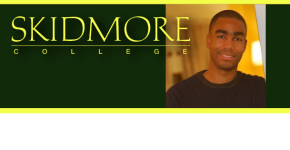
What can we tell from the face? There is mixed data, but some show a pretty strong coherence between what is felt and what is expressed.
Dr. Lawrence Ian Reed, psychologist at Skidmore College, profiles the implications of facial expressions.
Dr. Lawrence Ian Reed is a visiting assistant professor in Skidmore College’s psychology department. His research interests include evolutionary psychology, emotion, facial expression, and personality disorders. He earned his PhD from the University of Pittsburgh in 2010. Visit his website at www.LawrenceIanReed.com.
Meaningful Expressions
![]()
The human face is a window into an enormous amount of information regarding emotional and motivational states. Just by looking at the face, we can tell (1) which emotion is being felt; happiness, sadness, anger, fear, disgust, contempt, and surprise all have distinct facial expressions (2)we can tell when two emotions are blended together; so we can tell the difference between surprise paired with happiness and surprise paired with fear, and (3) and we can tell the intensity of an emotion; for example we can distinguish between slight annoyance to outright rage, and between a little trepidation to outright terror. All be looking at the face, which is readily visible and difficult to conceal.
Furthermore, facial expressions are difficult to fake. Specific facial muscles have been found to have two properties: First, they are difficult to stop in the presence of an emotion, and second, they are difficult to produce in the absence of an emotion.
One might wonder, though: why is the face so intimately tied to our motivational and emotional systems? Wouldn’t it be better if it wasn’t? Wouldn’t the smell of fear just egg on our opponents? Wouldn’t we be better off with a poker face? More specifically, what is the benefit of honestly advertising something as intimate and private as our innermost subjective feelings somewhere as conspicuous as the face?
What our work has shown is that facial expressions of emotion, because they honestly signal emotional and motivational states, can serve as guarantors of threats and promises. Our words, because they can easily be fabricated, can’t be trusted. Our faces, on the other hand, cannot lie and thus can to be trusted. In this way, the inability to control the face is not a limitation, but a necessity.

Comments
One response to “Lawrence Ian Reed, Skidmore College – Meaningful Expressions”
Interesting. Comic performances often depend on the contrast between what is said orally and what is said d facially.